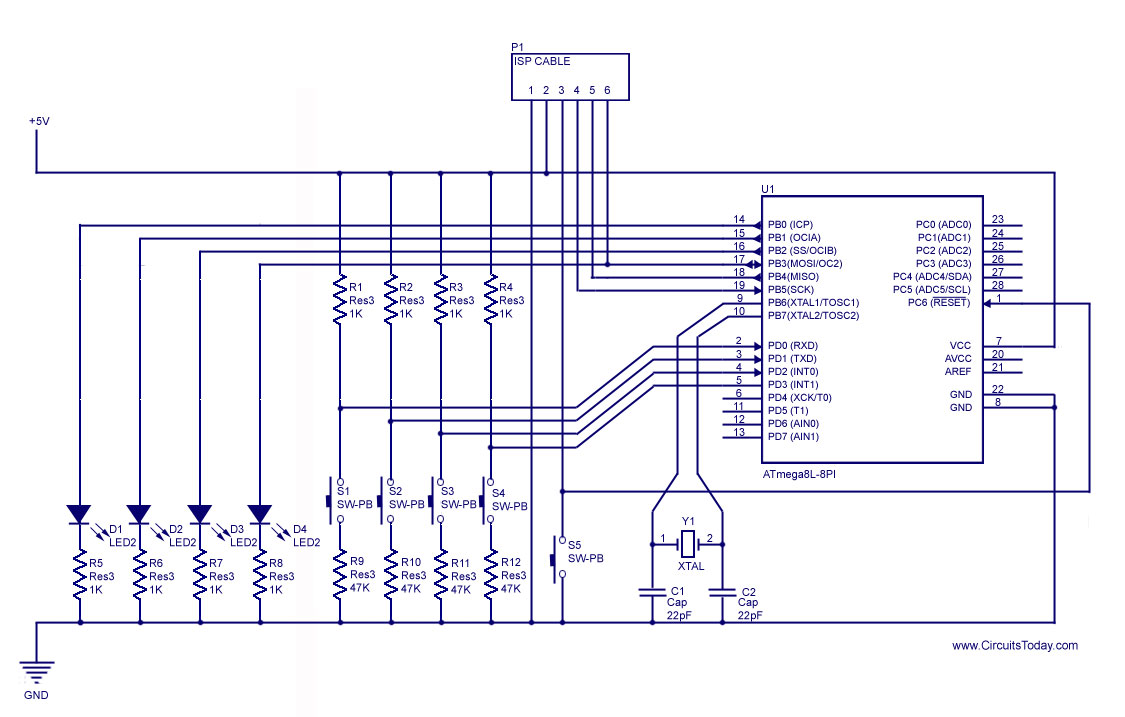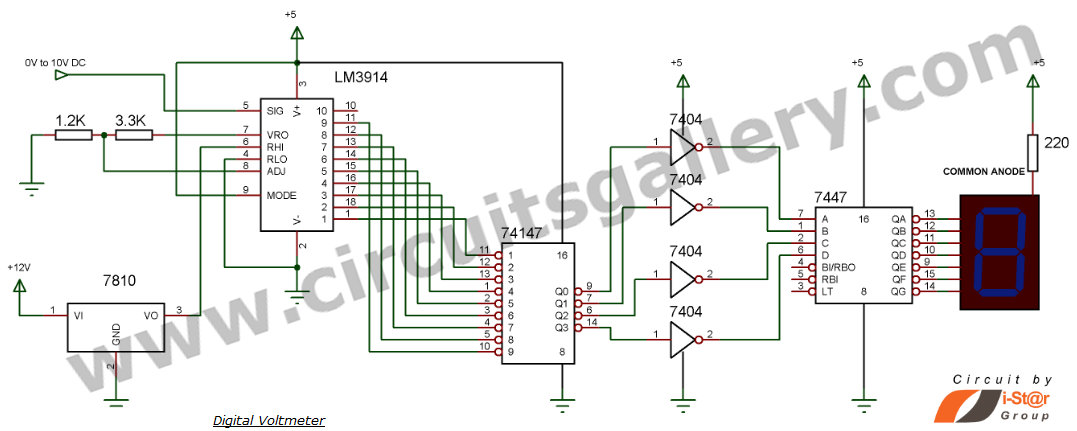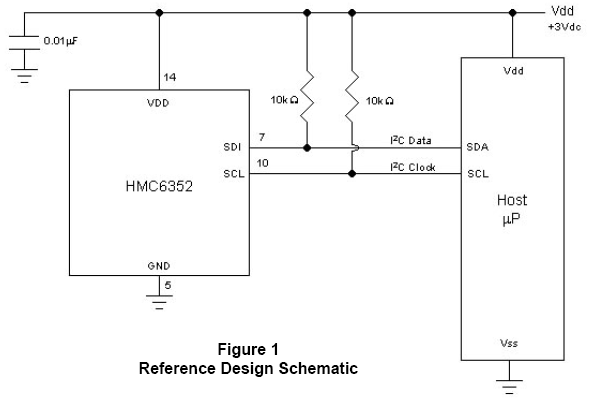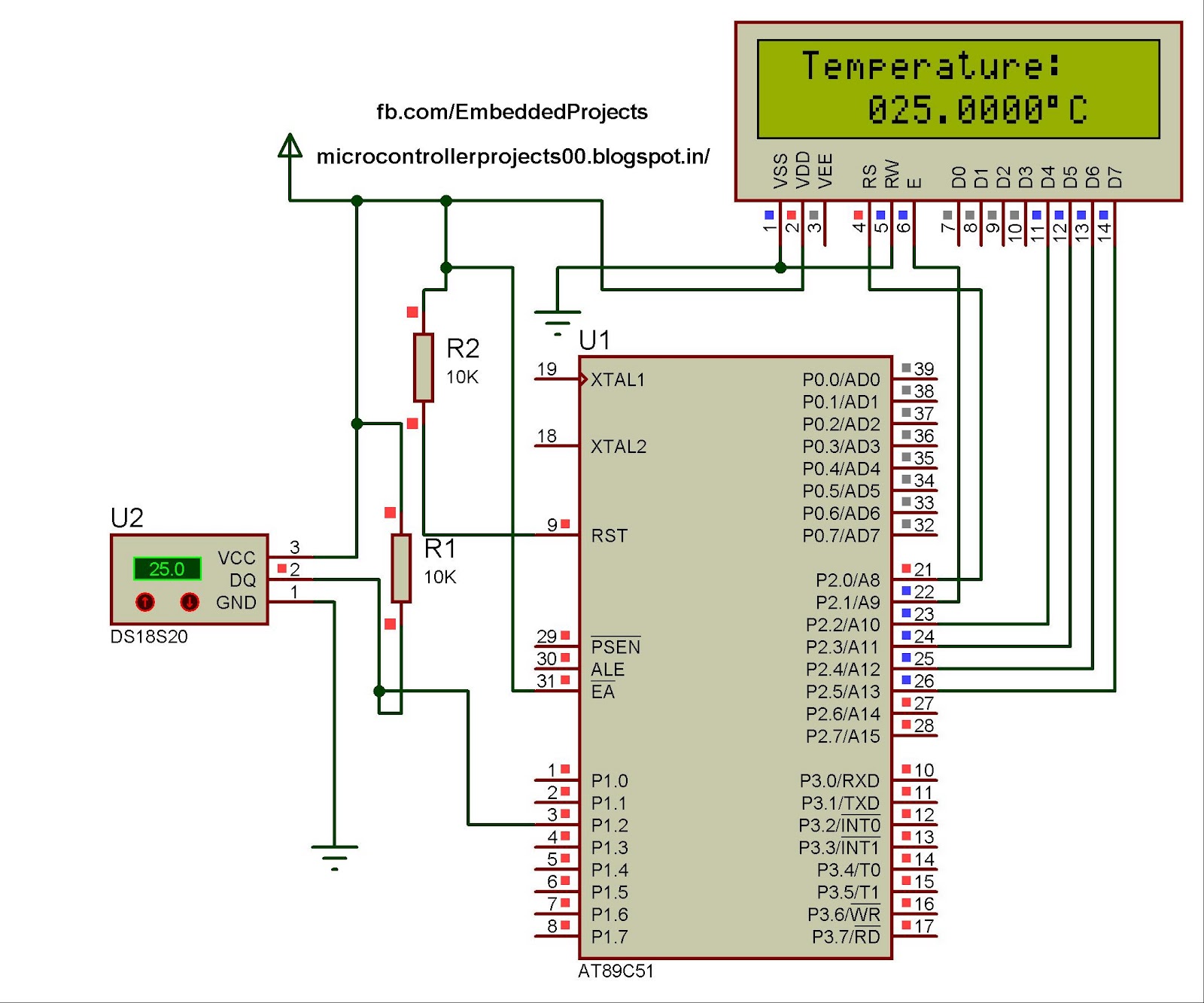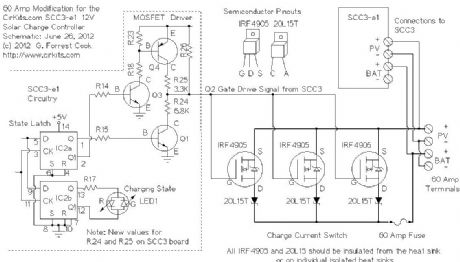
Digital centigrade thermometer

This circuit illustrates an ICL7106 interfaced with a silicon transistor to create a digital thermometer. Direct connections between the ICL7106 and an LCD display are depicted in Figure 12-11B. A diode-connected silicon transistor exhibits a temperature coefficient of approximately -2 mV/°C. To achieve accurate calibration, immerse the sensing transistor in ice water and adjust the zeroing potentiometer for a 0.00 reading. Subsequently, place the sensor in boiling water and fine-tune the scale-factor potentiometer to obtain a 100.00 reading. Reference: Bards Semiconductors Data Acquisition, 1991, pages 2-32, 2-39.
The circuit utilizes the ICL7106, a highly integrated analog-to-digital converter (ADC), which is specifically designed for digital voltmeter applications. The ICL7106 operates in a 3.0 to 5.0 V range and is capable of displaying readings on a 3.5-digit LCD display, making it ideal for temperature measurement applications. The silicon transistor, configured as a diode, serves as a temperature sensor, leveraging its negative temperature coefficient to produce a voltage output that varies with temperature changes.
In this design, the ICL7106 is connected directly to the LCD display, allowing for real-time temperature readings. The temperature sensing element, a diode-connected silicon transistor, provides a linear voltage output that corresponds to the changes in temperature. The negative temperature coefficient of -2 mV/°C indicates that for every degree Celsius increase in temperature, the output voltage decreases by 2 mV, necessitating careful calibration for accurate temperature readings.
Calibration involves two key steps: first, the zeroing potentiometer is adjusted while the sensor is submerged in ice water, ensuring that the output reads 0.00°C at the freezing point of water. Secondly, the scale-factor potentiometer is adjusted with the sensor placed in boiling water to ensure that the output reads 100.00°C at the boiling point. This dual-point calibration process ensures the accuracy of the thermometer across its operational range.
The circuit's simplicity and effectiveness make it suitable for various applications, including laboratory settings, environmental monitoring, and educational demonstrations. Proper implementation of this circuit can yield a reliable and accurate digital thermometer capable of precise temperature measurements.This circuit shows an ICL7106 connected with a silicon transistor to form a digital thermometer. Direct connections between the ICL7106 and an LCD display are shown in Fig. 12-11B. A diode-connected silicon transistor has a temperature coefficient of about -2 mV/ƒ. To achieve calibration, place the sensing transistor in ice water and adjust the zeroing potentiometer for a 000. 0 reading. Then, place the sensor in boiling water and adjust the scale-factor potentiometer for a 100. 0 reading. Bards Semiconductors Data Acquisition, 1991 p 2-32, 2 39 🔗 External reference
The circuit utilizes the ICL7106, a highly integrated analog-to-digital converter (ADC), which is specifically designed for digital voltmeter applications. The ICL7106 operates in a 3.0 to 5.0 V range and is capable of displaying readings on a 3.5-digit LCD display, making it ideal for temperature measurement applications. The silicon transistor, configured as a diode, serves as a temperature sensor, leveraging its negative temperature coefficient to produce a voltage output that varies with temperature changes.
In this design, the ICL7106 is connected directly to the LCD display, allowing for real-time temperature readings. The temperature sensing element, a diode-connected silicon transistor, provides a linear voltage output that corresponds to the changes in temperature. The negative temperature coefficient of -2 mV/°C indicates that for every degree Celsius increase in temperature, the output voltage decreases by 2 mV, necessitating careful calibration for accurate temperature readings.
Calibration involves two key steps: first, the zeroing potentiometer is adjusted while the sensor is submerged in ice water, ensuring that the output reads 0.00°C at the freezing point of water. Secondly, the scale-factor potentiometer is adjusted with the sensor placed in boiling water to ensure that the output reads 100.00°C at the boiling point. This dual-point calibration process ensures the accuracy of the thermometer across its operational range.
The circuit's simplicity and effectiveness make it suitable for various applications, including laboratory settings, environmental monitoring, and educational demonstrations. Proper implementation of this circuit can yield a reliable and accurate digital thermometer capable of precise temperature measurements.This circuit shows an ICL7106 connected with a silicon transistor to form a digital thermometer. Direct connections between the ICL7106 and an LCD display are shown in Fig. 12-11B. A diode-connected silicon transistor has a temperature coefficient of about -2 mV/ƒ. To achieve calibration, place the sensing transistor in ice water and adjust the zeroing potentiometer for a 000. 0 reading. Then, place the sensor in boiling water and adjust the scale-factor potentiometer for a 100. 0 reading. Bards Semiconductors Data Acquisition, 1991 p 2-32, 2 39 🔗 External reference
